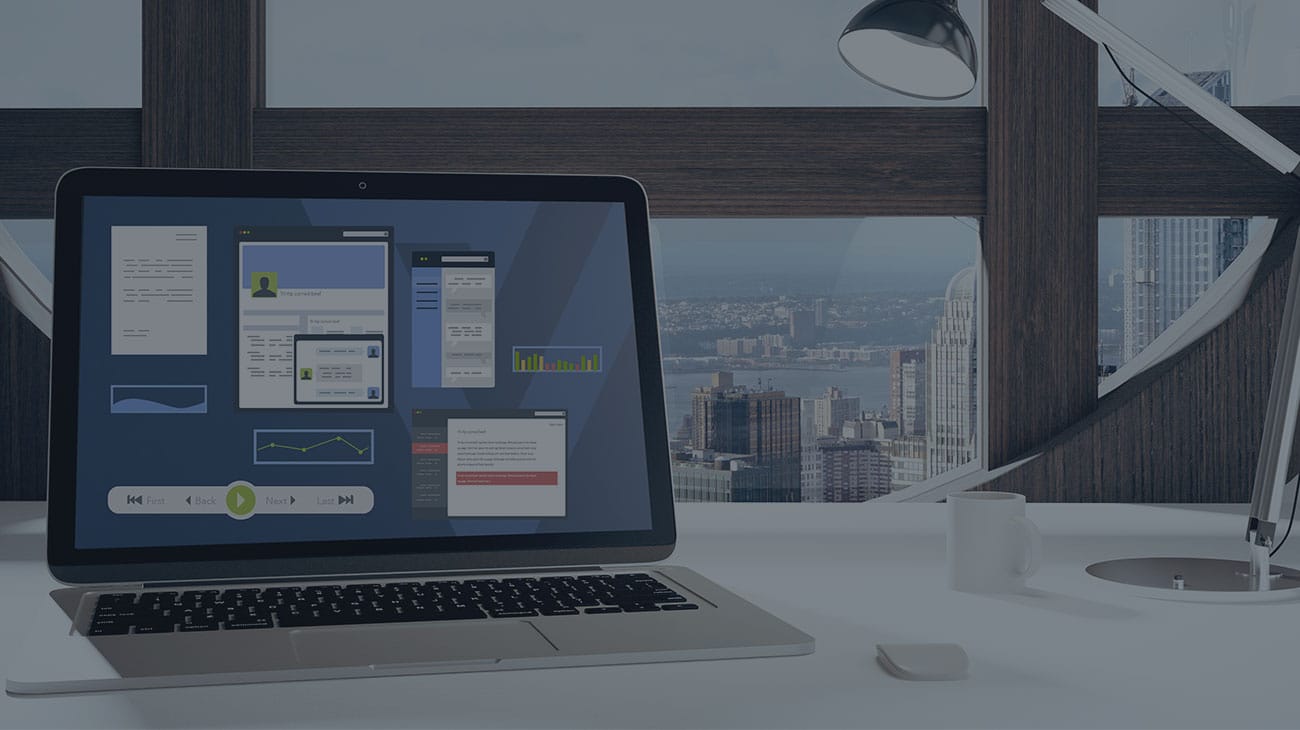
From Reactive to Proactive: Why AI-Powered IRM is a Must-Have for Compliance Teams
Learn how IRM helps compliance professionals proactively identify behavioral anomalies that often go undetected or are only discovered after violation. read more
Browse by category
Select a category to see more related content
How Insider Risk Management Complements Existing Cyber Security Solutions for Healthcare Companies
Healthcare organizations in particular need early detection because even one incident of non-compliance creates liability and exposure. Insider risk management solutions supplement existing cyber security solutions to allow these organizations to get ahead of threats. read more
How Insider Risk Management Complements Existing Cyber Security Solutions
Focusing on employees with insider risk management and other human centric security solutions provides a necessary complement to today’s popular threat mitigation solutions. read more
Smoother Workforce Investigations With Behavior Analytics
From data breaches to fraud and company policy violations, investigations can be difficult and time consuming. Behavior analytics can help sift through a lot of data to zero in on the evidence that supports an investigation. read more
The Difference Between Insider Risk and Insider Threats
A company focused on risk management is a company focused on creating a better work environment, not just a more secure one. read more
Fighting Risks Inherent in the ‘Work From Anywhere’ World
It’s a “work from anywhere” world and the way to get security cooperation from employees is to talk about the inherent risks. read more
Insider Risk – How Prepared Are You?
Insider risks can end up costing companies big money, and remote work has made the average cost of a breach higher than ever. Not every company is equally prepared to deal with insider risk. This report outlines the four stages of insider risk maturity and explores how to improve your insider risk preparedness. read more
Reducing Employee Turnover With Workforce Behavior Analytics
While the working world has changed, companies can take a proactive approach to forge new connections with employees and get ahead of potential reasons for people to leave. Workforce behavior analytics increases insights and control and reduces risk before, during and after someone quits. read more
Workforce Behavior Analytics: A Proactive Approach to Employee Monitoring
Workforce Behavior Analytics is a smart alternative to employee monitoring. Rather than simply watch for problems, Workforce Behavior Analytics delivers proactive insights that help executives, managers and HR leaders better understand their workforce. read more
2023 Preparedness Checklist: Ensure Your Workforce Is Productive and Secure
This guide will help you understand where there are opportunities and risks in your workforce, and what you can do to make sure 2023 is as secure and productive as possible with workforce behavior analytics. read more
3 Steps to Spotting Insider Risk
Organizations focused on security threats tend to focus on the external attacker. Solutions used to secure the perimeter, endpoints, email, and data are put in place. While absolutely necessary, they organizations lack the ability to equally protect against the insider – the employee that puts the organization at risk through either malicious intent or negligence. read more
How to Rebrand “Bossware” at Your Company
While employees don’t love being monitored, it does enable companies to get the oversight they need to feel more comfortable with working from home. This eBook provides the information you need to reframe “bossware” for your organization so that it becomes a more positive experience. read more
Suspicious That Your Work-From-Home Employees Aren’t Productive?
Do you have the nagging feeling that the people on your team that work from home are taking advantage of their newfound freedom? Perhaps they aren’t as responsive on Slack, or block off meeting times as “busy” without any explanation. Or, maybe their performance is less than what it used to be. These and other concerns about work-from home productivity are a common outcome of the pandemic and the resulting move to remote work. read more
Steps to Get Ahead of Insider Threats
In the current insider threat landscape, security and risk management leaders have a greater need to assess and manage insider risks. They must evaluate and strengthen their insider risk program, including surveillance of high-risk workers and anomaly monitoring of critical applications and data. This report provides a deeper dive into today’s top risks and provides a roadmap for minimizing risk through better intelligence, process and technology. read more
Six Steps to Manage Employee Productivity
When employees are no longer in the office every day, managers and HR teams need to rethink their approach to maintaining a clear picture of their employee’s health and productivity. This eBook shows the path from an unproductive distributed team to a high-performance one using workforce analytics. read more
Your Employees Are Your Biggest Threat
With more people working from home, using their own devices and working off-network, businesses have blind spots. What's more, people are more likely to steal from companies when they work from home. Your business doesn't have to bear the costs of employee threats - with the right approach you can stop threats before they happen. This eBook shows the path from imminent threat management to proactive risk management read more
Insider Risk – Finding a Solution That Fits Your Needs
Download our latest eBook, Insider Risk – Finding a Solution that Fits Your Needs, to learn more about how to create an effective, multi-pronged approach to reduce the threat of insider risk. Find out how employee monitoring technology that works on remote endpoints can help reduce blind spots, even with people working remotely or outside the company network. read more
Managing The Compliance & Security Nightmares Caused By A Remote Workforce
There are many advantages of employees working from home (not the least of which, is employee health) there are significant challenges regarding data security, privacy, and compliance. There are precautions and best practices that are being employed by many companies and should be part of the security and compliance infrastructure as companies adapt to the new norm of both people and sensitive data residing in remote locations. read more
Metrics Driven Monitoring of Remote Workers
Before the Coronavirus outbreak, there were many reasons why employees worked from home. For some, it's about removing distractions and finishing work. Learn what metrics are important when figuring out remote employee productivity and compliance and best practices in collecting such data. read more
Threat Hunting and the Rise of Predictive Threat Detection
These technological advancements within the cyber security space are driving a critical shift from antiquated and reactive threat detection to modern predictive threat detection. read more
Reducing Cyber Risk With AI and User Behavior Analytics
Leaders are coming to terms with the idea that being able to see, understand, and have reliable records of what users are doing with their corporate assets can provide valuable insights when trying to reduce cybersecurity risks within their organizations. read more
How to Conduct Workplace Investigations
Sooner or later, you may find that you have to conduct a workplace investigation. Misconduct by employees can harm the organization's reputation and negatively impact co-workers. read more
The Evolution of DLP
The concept of data loss prevention (DLP) has evolved and grown at an unprecedented pace over the last decade. Originally built on the premise that perimeter security can resolve most security issues, the technology further fell behind as Insider Threats, Ransomware, and additional risks spanning beyond data leakage continued to rise. read more
4 Steps to Simplifying Employee Investigations
If every employee simply focused on their work, investigations wouldn’t be necessary. But, that’s simply not reality. read more
Risk-Lowering Termination Process
To lower the risk of insider threat activity occurring as a result of an employee leaving the organization (whether involuntarily or of their own volition), organizations need to have a process in place that minimizes the opportunity for such threats. read more
Revealing The Dark Web
In this paper, we’ll provide an overview of what is the Dark Web, discuss why employee use of the Dark Web can mean trouble, and how to utilize current security technologies to detect and block the use of the Dark Web. read more
Quantifying Positional Risk Worksheet
A key first step in effectively dealing with insider threats is assessing the risk associated with each position in your organization. Download our questionnaire and worksheet to help you assess insider risk in your organization. read more
4 Steps to Reduce the Risk of Malicious Insider Activity
The risk of malicious activity has never been more of a reality for organizations. End users today access, process, and manage privileged data more than ever as part of their job. read more
The Cost Of Inaction
Your organization’s security posture is only as strong as your least secure — or least scrupulous — employee. All it takes is an IT professional forgetting to apply a patch, a manager sending sensitive data to the wrong person, or an angry systems administrator selling your intellectual property to set your business back millions of dollars. read more
Monitoring Employee Productivity in a Roaming Workplace
Allowing employees to work remotely offers additional benefits such as improved employee satisfaction, reduced attrition, reduced unscheduled absences, and an expanded potential talent pool. Even with those benefits, there are some challenges. read more
Keep Hires From Starting Fires
This whitepaper presents some common sense suggestions for improving the “beginning of the life cycle” risk mitigation process. In other words, ways to add a bit more intelligence beginning with the screening and hiring process. Then, we’ll look at how to tie the efforts made at the beginning of the life cycle to the rest of the employee life cycle, using a combination of process and tools to significantly improve security, and reduce the chances of an insider incident. read more
How UEBA Mitigates IP Theft by Departing Employees
The class of cyber actor with the greatest capacity to cause harm to organizations is not the so called state-sponsored hacker or cyber-terrorists. It is the “insider” – the company’s employees, ex-employees, and trusted vendors. read more
Insider Threat Report 2018
Today’s most damaging security threats are not originating from malicious outsiders or malware but from trusted insiders - both malicious insiders and negligent insiders. This survey is designed to uncover the latest trends and challenges regarding insider threats as well as solutions to prevent or mitigate insider attacks. read more
Implementing a User Activity & Behavior Monitoring Program
This whitepaper is intended to assist company executives determining how to best implement a user activity monitoring and / or user behavior analytics program. read more
How Firewalls Can Leave Your Institution Vulnerable
Firewalls are typically used to prevent hackers, or malicious actors from accessing your internal network. In addition, they are also utilized to filter Internet access to unapproved websites from within the internal network; however, that is not always the case when the machine is taken off the network. Firewalls therefore do not provide sufficient protection for a multitude of vulnerabilities within your network. User Activity monitoring fills these gaps by continuously monitoring users for signs of risk read more
Insider Threat Program Maturity Report 2019
The Insider Threat Program Maturity Model report was created to help security professionals assess their organization’s ability to monitor for, detect, and respond to insider threats. read more
Demonstrating Compliance in the Financial Services Industry
Nearly all financial services companies and financial institutions are subject to a number of compliance mandates. The Gramm-Leach-Bliley Act (GLBA) and the Dodd-Frank Wall Street Reform and Consumer Protection Act both provide specific guidance on how financial services organizations need to protect consumer data within financial systems. read more
Demonstrating HIPAA Compliance with Veriato
At its core, HIPAA compliance is simply about maintaining patient privacy by ensuring the appropriate access to and use of patient data by your users. Electronic Health Record (EHR) solutions provide detail around when patient data is accessed. Veriato provides contextual user activity detail and screen recordings necessary to satisfy HIPAA requirements. This brief discusses the challenges of safeguarding patient data, and how Veriato uniquely creates the audit detail necessary to meet HIPAA compliance objectives. read more
Demonstrating GDPR Compliance
GDPR compliance is simply about protecting personal data of EU citizens that is necessary and appropriate to collect. Applications hosting personal data may provide some level of detail around when personal data is accessed, but without visibility into what users do with personal data after they access it, the risk of data breaches, compliance violations, and the investigations, fines, and reputational damage that comes with them, is significantly increased. read more
Enhanced Data Protection Against Threats Inside the Perimeter
An effective insider threat program requires a mix of people, process, and technology. Over-reliance on, or neglect of, any of these three pillars has significant negative impacts on the ability of an organization to effectively identify and react to insider incidents before they become damaging (and with increasing frequency publicly known) attacks. read more
4 Steps to Monitoring Employees in a Remote Workplace
Working remotely comes with a fair degree of self-management and a lessened sense of accountability. This can exacerbate the risk of some very specific insider threats to the organization. read more
5 Steps to Quantifying Insider Risk
Risk is one of those subjective concepts that usually fall into vague categories like “low” and “high” – which has very little meaning on its own, and only has value when you tie those categories to actions (which we will cover later in this guide). To properly quantify the insider risk within your organization, we want to initially walk you through how to begin thinking about insider risk, as it is more a fluid and shifting concept than, say, the static risk assessment associated with whether your systems and applications are completely up to date on their patches. read more
7 Steps to Building an Insider Threat Program
This Getting Started brief provides some high-level guidance around the steps necessary to implement an Insider Threat Program (ITP) to proactively identify potential and active threats, as well as to appropriately respond should a threat arise. read more
3 Steps to Protect Your Data During The High Risk Exit Period
The tasks performed during the exit period need to shift from just addressing the necessary HR paperwork, to ensuring the security of your organization’s most valued asset – it’s confidential data and intellectual property. By putting in place a CIPA, a security-focused termination process, and a review of employee activity, organizations can lower the risk of data leaving the organization – even in the event of an employee exit. read more
Insider Threats and the Need for Fast and Directed Response
The results of the SANS survey on insider threats show that organizations are starting to recognize the importance of protecting against the insider threat but struggle to deal with it; as one might expect, larger organizations are more likely to have provisions for responding to such threats. read more
Ten Tips for Preparing an Effective Acceptable Use Policy
Corporate computers and information and communications systems remain the workhorse for most businesses, even as alternatives, such as third-party text messaging services, external social media, and cloud computing, flourish. read more
Network Behavior and User Activity Intelligence
A recent survey asked information security decision-makers – from financial services, professional services, healthcare, retail, and government organizations around the world – what keeps them up at night. And insider threats were high on the list for the 345 pros polled. read more
Protecting and Securing Manufacturing Intellectual Property
The theft of intellectual property is likely at the top of your list of concerns. The manufacturing industry generally shares your concern – intellectual property theft is considered the #1 cyber threat facing manufacturers today, as well as being the top data protection concern . With 90% of data breaches in the manufacturing industry involving intellectual property1, the focus on intellectual property is justified. read more

















































